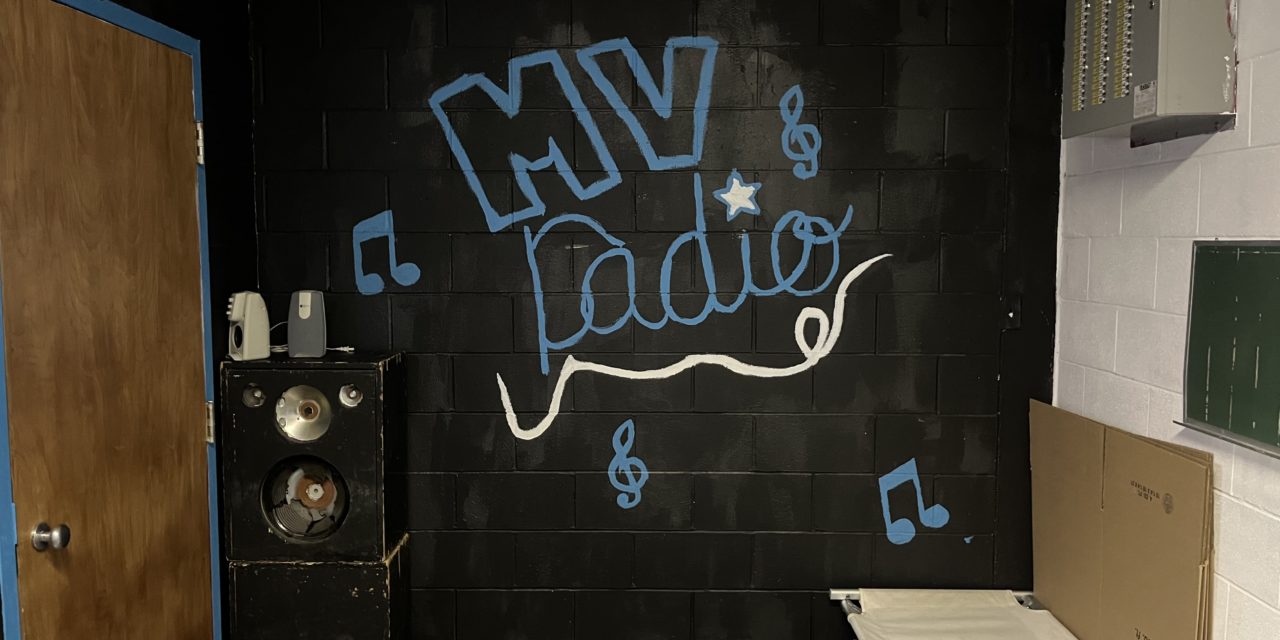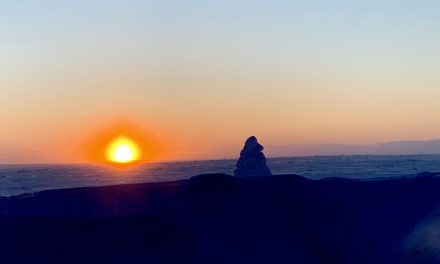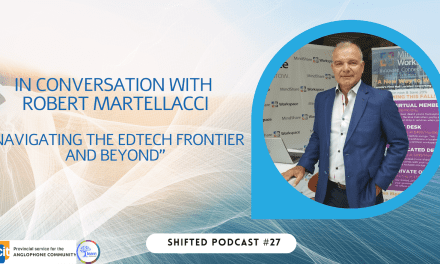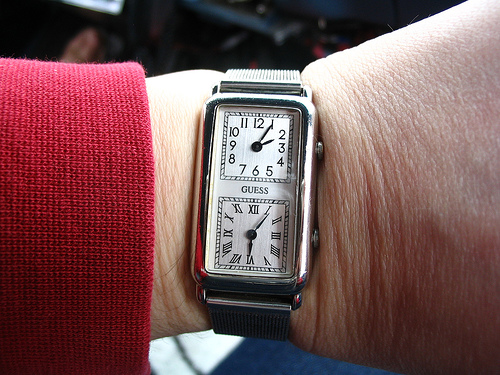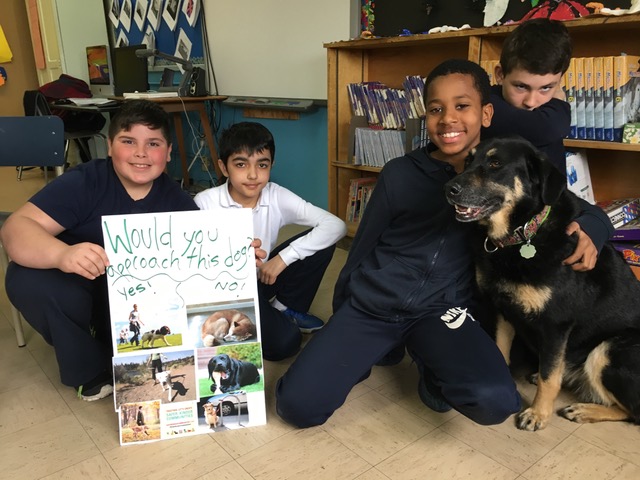This year, the team at Massey-Vanier has been working to re-establish their school radio station. The radio has been running almost every day since October 2022 during the lunch hour. The sets are between 30 and 45 minutes, depending on the students’ intentions for the set.
I recently had the opportunity to sit down with John Nahas, a Massey-Vanier High School (ETSB) teacher. Below is a short discussion we had about the project and how the radio is impacting school climate and student engagement.
What led to the decision to re-establish the school radio station at Massey-Vanier?
I started working at Massey-Vanier this fall. The administration does a beautiful job of encouraging staff and students to pursue their interests and share their knowledge with others. When I talked about my experience in sound production, music production and DJing, the admin mentioned that there used to be a school radio station that some staff and students were interested in restarting. We located and replugged the existing equipment and have been hosting radio shows almost every day since. The first day we launched the radio station, I brought my professional DJ equipment in and did a set during lunch. The DJ software and mixer are impressive. By the end of the day, several students had approached us, showing interest in learning more about radio production and DJing. Over the past few months, we worked on learning the basics of radio production. Now the radio shows are run entirely by the students with educator supervision.
What equipment is needed to set up a school radio station?
Many schools already have the audio equipment needed to set up a radio station. It is sometimes just located in a storage space. Our radio station uses a microphone that is connected to the existing school PA system. If you are interested in setting up a radio at your school, it is also helpful to have a basic mixer which you can buy for around $100, a computer, and a subscription to a digital music collection like Spotify.
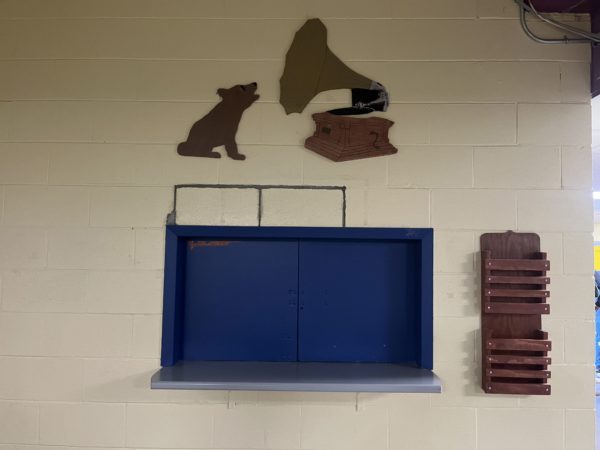
A window to the room that hosts the school radio at Massey-Vanier High School (ETSB)
You do not need a large space to run a radio station. We are lucky to have a small room at Massey-Vanier to dedicate to this project. A radio station could also be set up in an existing classroom or another area in a school if space is tight.
Do you have any advice for schools considering starting or reviving a school radio station?
First and foremost, educators need to approach a project like this without our personal musical biases or views of what radio should be or could be. I feel like what has made this project most successful were the opportunities students have had to showcase their voices and contribute to nurturing their school climate. Tapping into what the youth are interested in engages and motivates the student community to participate in the project. You can begin where there is interest and then expand from there. I think that it is also important to start small. You don’t need a background in music production to start operating a school radio station, all you need is some basic audio equipment and technical knowledge. Youtube is an excellent tool for learning how to operate a basic mixer and plugin different audio equipment.
Most of what I’ve learned about music has been through improvisation. Like many things in education, mindset is critical. Learn as you go, and remember that there are no wrong notes, just empty airspace. Radio is all about keeping the momentum going. Music production is a way to teach students about copyrights and the ethical use of music. If you are looking into starting a school radio and are new to music production, learning about the CRTC rules with your students is also essential. Bringing school values into discussions can also be good when students begin to generate their radio playlists or shows. It is an excellent opportunity to get students involved in supporting the creation and maintenance of a positive school climate. Finally, I suggest reaching out to your community to see if individuals are interested in music and supporting students with the radio. Feel free to reach out to us at Massey Vanier too. We are still learning, but connecting with other schools and maybe exchanging ideas or playlists would be a pleasure!
What has the response from students been?
The response from students and staff has been great. Students seem drawn to the DJ gear and the animation that comes with DJing and hosting radio shows. The first few days we launched the radio, it felt like a controlled party was taking place in the hallways. Students and staff were smiling, dancing, and singing together. It was very welcoming to see staff and students building relationships and finding points of mutual interest. The radio is one way for students and staff to recharge, have fun, and interact positively. Now that the students are taking control of the radio station, we see more of the dynamic culture of the school. Each student brings something new and unique to the production. Their tastes in music are diverse, so people are exposed to new music genres and artists. The students are learning about performance and animation, and we’ve observed their competency and confidence grow via the radio station.
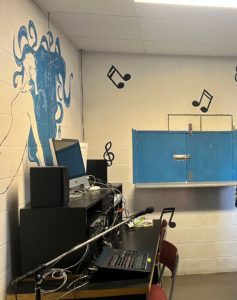
Inside the student radio at Massey-Vanier High School (ETSB)
In your opinion, how can music play a role in educational success?
Music is a natural therapeutical path that folks can embark on to be able to face emotions and deal with different life situations. It’s a way to connect to others after a long pandemic. Whether you are a student or a staff member, jamming out to a song you know in the hallway just feels good and can give you the energy to get through the remainder of your school day. It allows people to find some downtime in a hectic school day and take a break from some of the academic and other pressures that youth may experience. It helps students connect and showcase their personalities and interests in school, which helps to make school a more welcoming place to be. They know that people listen to their work. In this way, it helps with the retention of students.
Finally, music has the power to spark creativity in all aspects of our lives, which can help support students and staff in their learning and work. One of our students is very interested in pursuing radio broadcasting after secondary. She now runs her own show once a week with her friends. In this way, the radio helps to bring the student closer to their career goal. They are learning skills that they can apply to their post-secondary career. It is an authentic learning experience. The radio seems to engage some and highlight different real-world opportunities.
What have students been playing on the radio? Have they solely been interested in music, or have they been interested in other forms of radio production like interviews, comedy skits, etc?
I have found the diversity of musical interests interesting. I don’t want to reveal my age here, but I was surprised at some tracks students wanted to play! They brought me, and probably some of my colleagues, back to our high school days.
One of the things we work on in radio production, similarly to in language classes, is gearing the content to the audience and respecting all listeners. The students recognize that we share the space, so we must respect each other and use songs with clean lyrics. The students understand that the radio is also a medium to nurture school pride and positivity. The music they play must respect the expectations and principles that guide our school environment. The students are already versed in these expectations and are usually very respectful of our mindset and the operating framework.
There are many possibilities to partner with teachers in different subject areas to create content, but for now, we are starting by familiarizing students with the technology and focusing on developing other aspects of radio production, like animation skills. There is interest in eventually branching out into other forms of production, like interviews or comedy skits.
One of the students does themed radio shows, where they put together music playlists based on different historical periods or events. They explore history by what was going on musically for a specific society or territory. This particular student will play a song and then jump on the mic for a bit to elaborate on the origin of the song and why the song was significant historically. Their playlists engage other students more in music and history!
Now that students are becoming more familiar with the basics of radio production, the goal is to go deeper next year and develop more diverse radio programs. I want to explore voice recording software with the students so that we can have some original tracks recorded by Massey-Vanier students, staff, or members of our local community. There are many talented artists in our hallways that I’ve seen perform on different occasions, like at our school carnival. The students are bringing the hallways alive and exploring ways to expand the radio station to collaborate with local artists and members of the community.
Can you speak more about how the radio can tie into what students are learning about in class? Are there dimensions of digital competency involved?
We talk a lot about digital competency and the technology involved in radio production. Students have been learning how to set up and use different DJ hardware like mixers and turntables. They’ve also become familiar with different music-mixing software like Serato. We discuss sound decibels and faders for the microphone and song transitions. Right now, some students are learning how to perform smooth transitions between songs which requires tonal play; you basically transform your DJ controller into a synth.
We also explore different methods of expressing creativity using music-mixing software and playlists. While we often think about robotics and coding, there are lots of ways to nurture different dimensions of digital competency through radio production. Furthermore, a lot of DJ software is now integrating AI-assisted plugins, so there are definitely opportunities to learn and explore algorithms.
There are also lots of opportunities to develop language competencies through the production of radio podcasts or interviews. The social science playlist I mentioned above is another example of how we can tie the radio to other aspects of student learning. We are just beginning to scratch the surface here and can’t wait to dive deeper into these different avenues.
Where do you see the radio going? What is next for the students?
As I mentioned above, we want to tap into the current interest and talent of Massey-Vanier’s welcoming and engaging community. Now that students have learned the basics of radio production, we want to explore different forms of radio production and work more closely with staff and the broader community. There are lots of possibilities in terms of partnering with local artists. We aim for the students to be involved with every aspect of this process. We look forward to seeing which avenues they want to pursue going forward.

